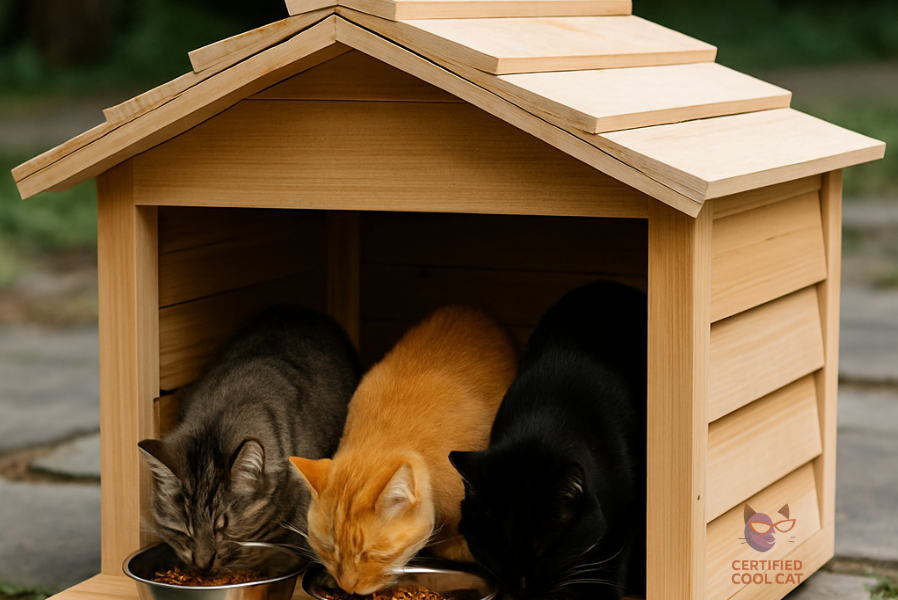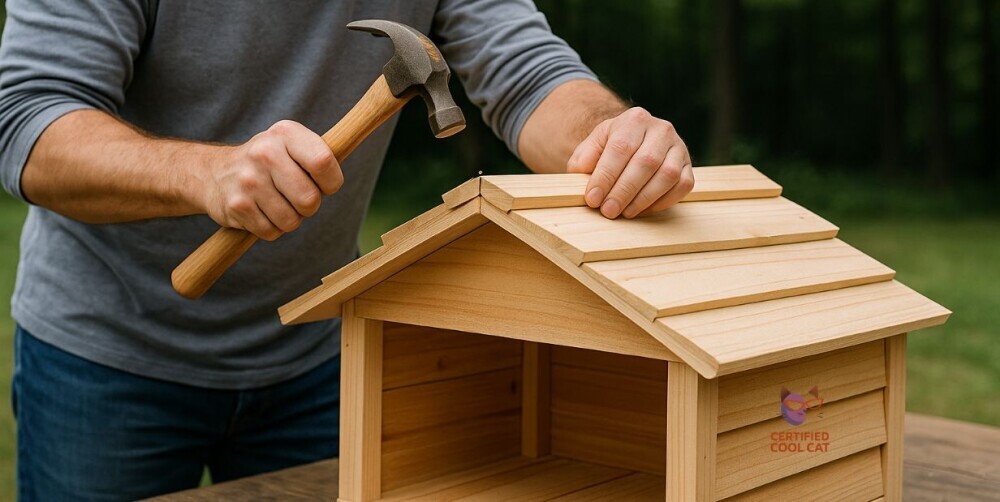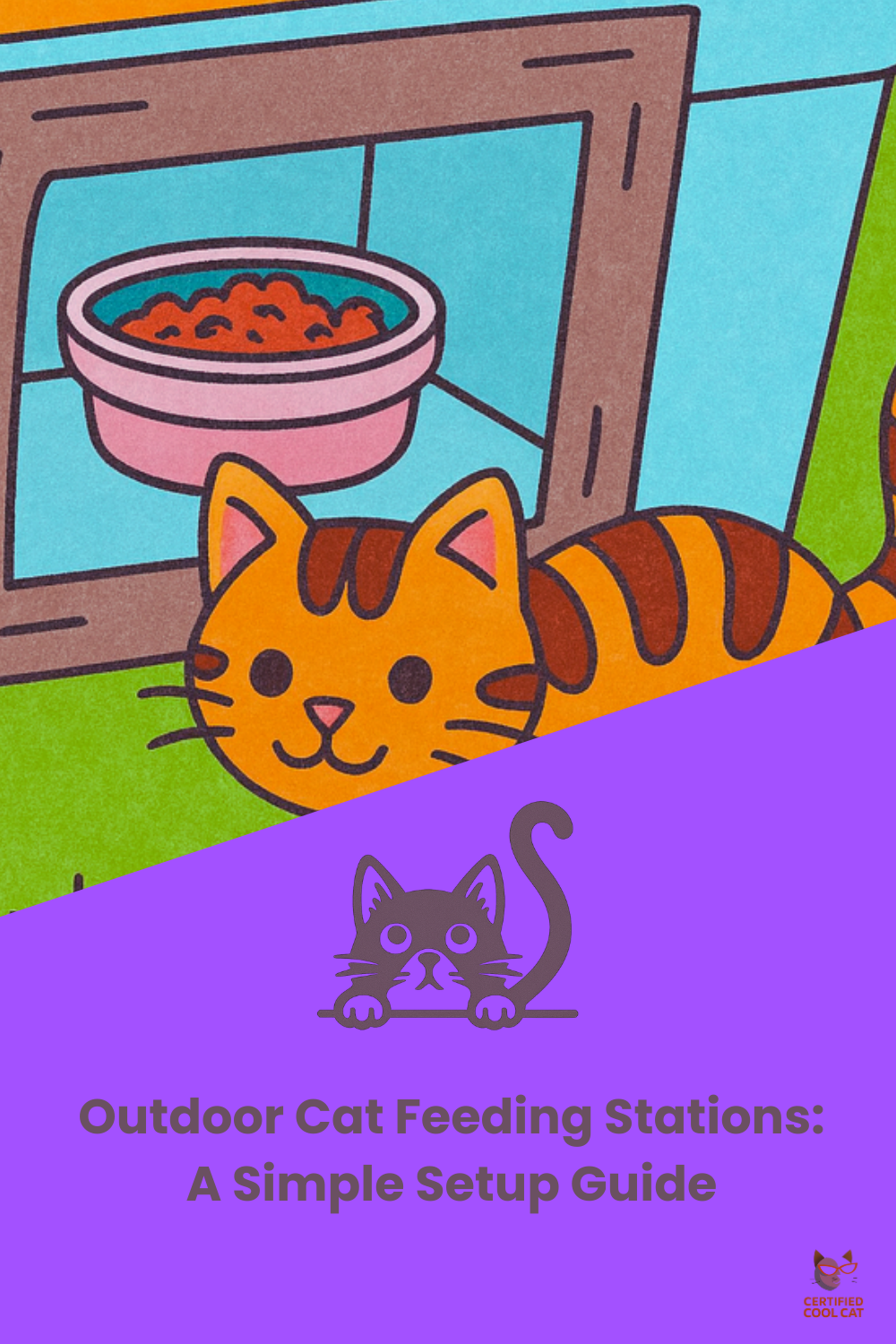Heading out on vacation but worried about the local feral felines missing their meals? No need to fret—I’ve got some handy tips to ensure those kitties don’t go hungry. First up, prepping your feeding stations ahead of time is crucial. Ensuring they’re securely placed, weatherproofed, and stocked with enough food can keep a cat colony well-fed while you’re soaking up the sun.

Another solid plan is getting a neighbor or a pet sitter involved. Just a brief, friendly chat to explain the feeding routine could make all the difference. You’ll find most folks are willing to lend a hand, especially when it’s for such a noble cause.
For tech-lovers, investing in automatic feeders might be the ticket. These clever devices dispense meals on a schedule, so the cats get what they need even if you’re off-grid. Remember to test them thoroughly before you jet set to avoid any mid-vacation hiccups.
And hey, let’s not forget stress levels! Cats are creatures of habit and any disruption can ruffle their fur quite a bit. Keeping the feeding routine consistent and making sure there’s nothing strange about the setup will help the cats feel secure and cared for even during your absence.
Strategic Locations for Outdoor Cat Feeding Stations
Picking the perfect spot for a feeding station can feel a bit like a treasure hunt, right? It’s all about making sure the cats remain safe while they chow down. A top-notch location is accessible yet discreet. Finding a spot that offers some cover from the elements but isn’t too secluded is key.
You want enough proximity to natural shelter, like a bush or a shed, where cats can quickly scamper off if they sense danger. Also, it’s smart to stay away from areas where wildlife like raccoons can easily get into the kibble—no need to throw a wild critter party!
A little awareness of local community and environmental rules goes a long way. Scouting out places away from sidewalks or community spaces reduces the chance of causing a nuisance to passersby while still respecting communal landscapes.
Balancing all these factors can help maintain the peace. Remember, the goal is to feed the cats without attracting unwanted attention or causing chaos in the neighborhood. With some thoughtful planning, you can find a spot that works for both the cats and the community.
Building and Maintaining an Effective Feral Cat Feeding Station

Crafting your own feeding station might sound a bit daunting, but trust me, it’s a rewarding project that doesn’t need to break the bank. Start with sturdy materials like wood or plastic. These can withstand the weather and a bit of tussling with the neighborhood wildlife, too.
A simple design could be as easy as modifying a Rubbermaid bin into a makeshift diner for the cats. Just cut out a couple of entry points and voilà! You’ve got yourself a cozy, dry spot for the kitties to eat.
Weatherproofing techniques might be your next focus. Elevating the station with bricks or wooden pallets can help keep things dry during rainy days, while a sloped roof can prevent water from pooling. Think simple and practical—nothing too fancy is needed to keep those felines comfy and safe until they can get eating.
To keep the peace with non-feline neighbors, aim for a feeding schedule that minimizes intrusion. Early mornings or evenings work great as these are usual meal times for cats and often are quieter times in the neighborhood.
And for those watching the wallet, there are loads of cost-effective ways to build. Using recycled materials or grabbing excess from home improvement projects means you can whip up a functional station without dropping much cash. The cats will thank you with happy meows and clean bowls.
Navigating Legal and Community Guidelines on Feeding Stray Cats
Feeding stray cats? You might run into a few community rules or legal considerations that you’ll want to navigate. First things first, check your local ordinances. Some areas have restrictions on feeding wildlife, and stray cats can sometimes fall into that category.
Being open with your neighbors can smooth out potential bumps. A friendly conversation about your efforts and the benefits of managing the feral population might win some allies. Explaining the positive impacts of feeding, like reducing rodent problems or caring for community cats, can shift the perspective.
If someone’s feeling less neighborly and lodges a complaint, know how to handle it respectfully. Many communities have mediation services, which can help resolve things without escalating. Understanding the local animal control policies ahead of time can prepare you for any questions they might ask.
Embrace a community-centered approach. Creating cooperative feeding teams or cat care groups can strengthen neighborhood ties while sharing the responsibility. This isn’t just about the cats anymore—it’s about neighbors coming together for a shared goal.
Remember, feeding stray cats is about creating a safe and manageable environment for both the kitties and the folks living nearby. Thoughtful communication and understanding legal aspects ensure you’re doing the best for everyone involved.




I really enjoyed this article—it’s both practical and compassionate. I like how you didn’t just cover the “how-to” side of setting up feeding stations but also touched on the community and legal aspects, which are often overlooked. The DIY tips (like using a Rubbermaid bin and elevating it with pallets) make it feel very doable, even for someone on a budget.
In my opinion, the strongest part was the reminder that feeding cats isn’t just about food—it’s about consistency and minimizing stress for the cats and neighbors alike. That balance between helping the colony and keeping the peace really stood out.
One thing I’m curious about: in your experience, do feral cats adapt better to automatic feeders over time, or do they tend to rely more on the human presence and routine of manual feeding?